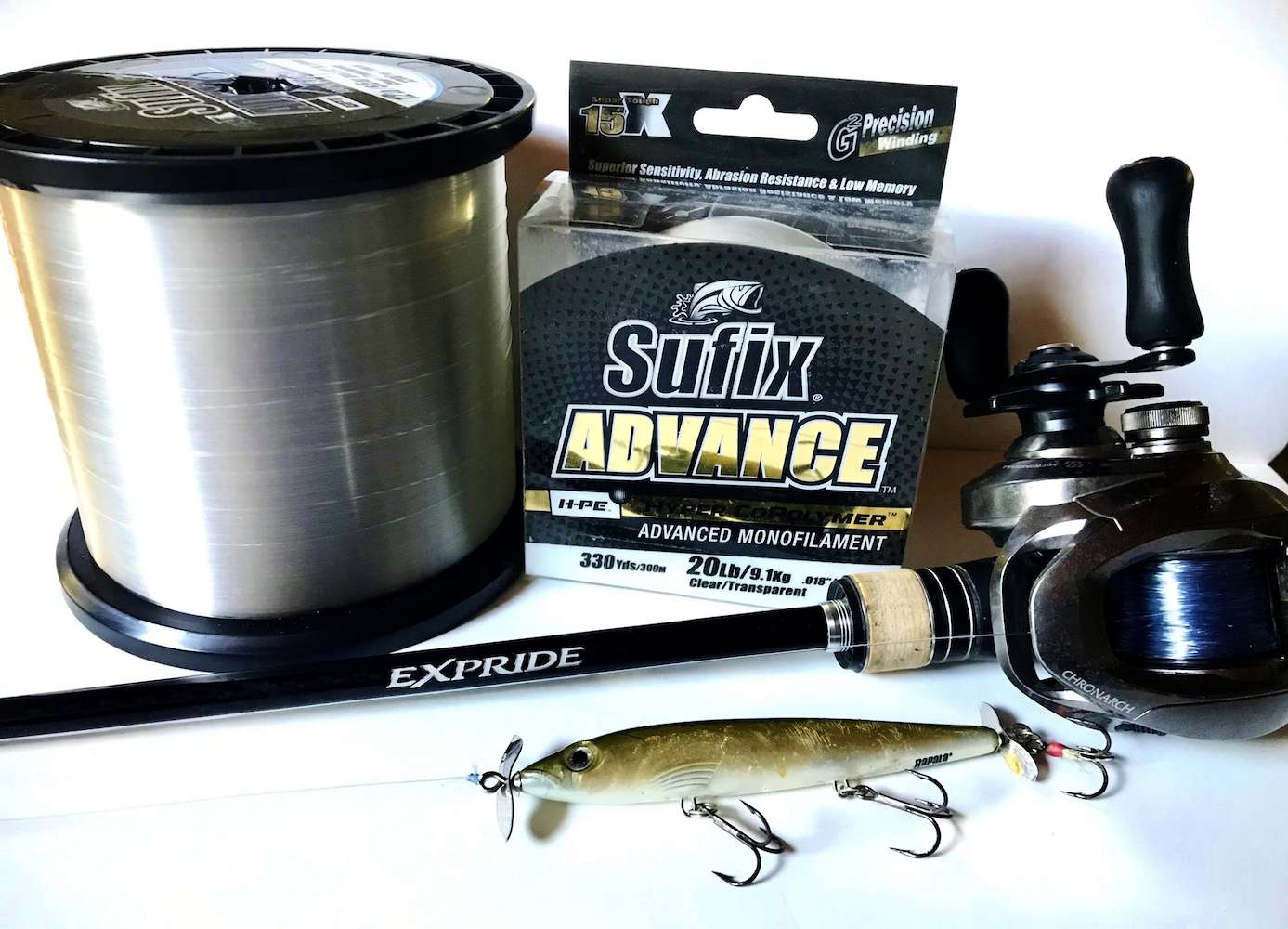
Today’s anglers have three basic types of fishing lines from which to choose — monofilament, fluorocarbon and braid. And all can be good, depending on their application.
Whether you’re fishing in open water or probing heavy cover, one of these line types will be perfectly suited to the need. And in some cases, a combination of two may be applicable — such as braid with a fluorocarbon or monofilament leader.
This is common knowledge. What’s not commonly known, however, is how these lines are made and why that’s important in the selection process — information, some of which, may surprise you. It certainly surprised me.
Ben Miller, Rapala’s head of product development for Sufix fishing lines, is the one who educates me. We’ve been working together for years in the development of high-performance fishing lines, and it has been a steady learning process.
With Ben’s help, I’d like to share some of that knowledge with you now, by discussing each line type briefly, shedding light on their unique advantages or disadvantages.
Mono first
Mono (short for monofilament) is a single strand of line made from one or more than one type of nylon. The nylon polymers are then extruded into a single strand of finished material in varying diameters and tensile strengths. These individual strands are then spun onto varying sized spools, measured in yards or meters (as are all line types).
There are different grades of polymers, as there are different grades of nylon, and depending on which a manufacturer uses will determine the quality of the end product. The old adage “you get what you pay for” comes to mind.
Besides clear, mono can come in a variety of pigments, including shades of blue, green, yellow, brown, red or combinations of these. Other characteristics can also be controlled, such as stretch and tensile strength — not just by thickness, but by the materials and processes used to make them.
Of the three basic types of fishing line, mono is considered to have the most stretch. It’s also the most buoyant, which makes it ideal for slow-moving topwaters and shallow-running crankbaits — lures that employ treble hooks requiring some shock absorption, so as to avoid being torn free during battle.
According to Ben Miller, Sufix employs a slightly different approach in the making of its Advance Monofilament. He says, “By combining copolymer nylon with high-modulus polyethylene (HMPE), a hyper-copolymer structure results. And that offers numerous benefits, such as enhanced abrasion resistance, blockage of UV light and improved hydrophobic qualities.”
In laymen’s terms, he’s saying it provides less stretch and more sensitivity (compared to traditional nylon monofilaments) with increased tensile and knot strength.
In my own assessment, Advance Monofilament excels in all of these. It has become my go-to mono for topwaters and any type of shallow-running lure requiring a buoyant line with some stretch.
Fluoro next
Like monofilament, fluorocarbon is polymer based but with a nearly identical refractive index to water. That is why it disappears so well beneath the surface.
Fluoro is also denser than mono, which enables it to sink — a very desirable trait for deep cranking or light line presentations like drop shotting. Its added density makes it more abrasion resistant, too. Fluorocarbon doesn’t absorb water, so it won’t weaken and begin to stretch — an issue with some monofilament fishing lines. It’s also better at resisting deterioration from sunlight or harsh chemicals like gasoline.
Fluorocarbon is “stiffer” by nature, which makes it more sensitive — another reason it’s so ideal for certain cranking and light line presentations. Ben adds, “Our proprietary GPT (Gel Phase Technology) process produces ultimate performance and clarity.”

Sufix uses an exclusive “G2 Precision Winding Process,” which wraps the line in perfect, concentric loops on the service spool — without crossing or cutting into the line beneath. The result is smooth, flawless line flow when spooled to your reel. This same winding process is used for several of their other lines, including Advance Monofilament.
Finally braid
Originally spun from natural materials like silk, cotton and linen, braided fishing lines have been around forever. Nowadays, they are created using manmade materials — various forms of polyethylene. And like nylon, there is a range in quality. Not only is that a consideration, how a manufacturer weaves the material is also of concern.
If woven correctly, using superior materials, braid is tougher and more durable than mono or fluoro of the same pound rating. It also comes in a variety of pigments and patterns, including camo. This offers an advantage when trying to fool fish in clearer water.
Today’s anglers use braid for numerous applications — not only for its tensile strength, but because of the way it behaves on the spool, particularly with spinning reels. Braid combats line twist better than mono or fluoro, and if used in lighter pound tests, it will outcast them as well. That’s why you see so many Elite Series pros using braid as their main line, even when drop-shotting finesse baits.
Sufix 832, for instance, uses an 8-count carrier — seven high-modulus polyethylene fibers and one Gore Performance Fiber, the same material found in quality, waterproof apparel. And in Ben’s words, “That provides increased abrasion resistance and less fraying of the material … while also adding shock absorption and improved castability.”
Fishing line wrap-up
While we could write a book on performance fishing lines, the bottom line is that they have differences — characteristics that make them more applicable to certain situations. Hopefully the information shared here will help you better understand those differences, so that you can make the right choice for a given application, regardless of whose brand you buy.
Follow Bernie Schultz on Facebook or through his website.


